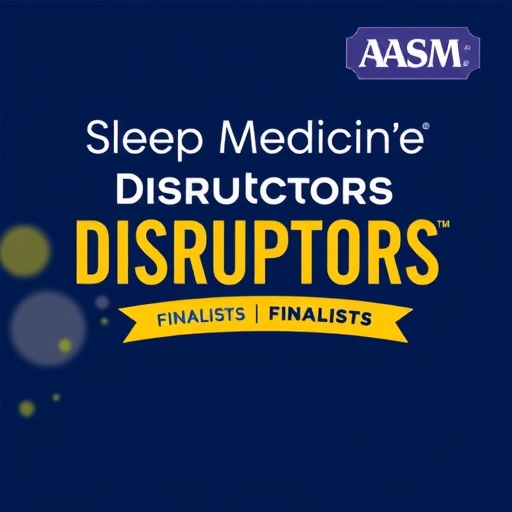ANN ARBOR, MI – In just a few short months, hospitals across the country will start their annual push to make sure their workers get vaccinated against influenza, to protect themselves and others. Memories of the last flu season – one of the worst in years – still linger.
A new study shows a rapid rise in the percentage of hospitals that require the vaccine – except among those that focus on treating the nation's military veterans.
In two surveys taken four years apart, the percentage of Veterans Affairs hospitals that have a flu vaccine mandate rose only slightly, from 1 percent in 2013 to 4 percent in 2017, the study shows.
But at the same time, the percentage of non-VA hospitals requiring flu shots rose from 44 percent to nearly 70 percent.
The study, by a team from the University of Michigan and VA Ann Arbor Healthcare System, is published in JAMA Network Open, a new open-access journal from the publishers of the Journal of the American Medical Association.
"In just four years, the non-VA hospitals have really stepped up on requiring the vaccine, rather than just encouraging it," says Todd Greene, Ph.D., M.P.H., the U-M and VA researcher who led the study. "Studies have shown that vaccination mandates, coupled with an option of declining vaccination in favor of wearing a mask, are most effective in reaching high percentages of vaccination."
Short of a mandate, all VA hospitals have a general goal of increasing flu vaccination among their health care workers, and a national VA directive last fall set an expectation that employees would get vaccinated or wear a mask when caring for patients during flu season.
While the flu vaccine does not offer total protection against getting the flu, it can also reduce the severity of symptoms among those who do get infected. Each year, the flu leads to tens of thousands of deaths, hundreds of thousands of hospitalizations, and millions of outpatient visits and lost work and school days.
Flu prevention: a mixed record
Among all hospitals without a mandate, efforts to prevent the flu virus from spreading among patients and workers were mixed, the study shows. Only 41 percent of non-mandate hospitals required unvaccinated workers to wear a mask during patient interactions in flu season, and only 21 percent had penalties for non-compliance with the hospital's policy. In all, two-thirds of non-mandate hospitals did have a formal policy outlining how workers could officially decline to get vaccinated.
All hospitals with vaccination mandates, on the other hand, had formal declination policies in 2017. The vast majority of hospitals with mandates allowed medical contraindications and/or religious reasons as allowable reasons to decline vaccination. Just under 13 percent allowed workers to give any reason for declining. Nearly 83 percent of hospitals with mandates required unvaccinated healthcare workers to wear masks during patient interactions. And for those who neither got vaccinated nor signed a declination form, nearly three-quarters of hospitals with a mandate had penalties in place for non-compliance.
The researchers also looked at differences by hospital-level characteristics. For instance, nonprofit hospitals were much more likely to mandate flu vaccination. One-third of the non-VA hospitals were teaching hospitals, meaning that they train new doctors through residency programs, but they were no more likely than non-teaching hospitals to require flu vaccination by 2017. Nearly 80 percent of the VA hospitals were teaching institutions.
About the study
The new study is based on the latest two waves of a hospital infection prevention survey that Greene and his colleagues in the U-M/VA Patient Safety Enhancement Program have conducted since 2005.
In 2015, they published data from the 2013 survey, which sent a questionnaire to the infection prevention specialists at all U.S. general hospitals that had 50 beds or more and an intensive care unit, and to all VA hospitals.
In 2017, they repeated the survey, but changed the methodology slightly, to randomly sample 900 general medical/surgical hospitals of any size that have an intensive care unit. They again surveyed all VA hospitals.
While the percentage of hospitals that responded to the survey dropped from 69 percent in 2013 to 59 percent in 2017, the researchers say their results are still nationally representative. The 2013 findings are based on 386 non-VA and 77 VA hospitals; the 2017 data are from 526 non-VA and 73 VA hospitals.
Greene notes that 2013 was the first year when non-VA hospitals faced the prospect of public reporting of their worker vaccination rates, if they were taking part in a national pay-for-reporting quality program run by the federal agency that oversees Medicare.
Under the Hospital Inpatient Quality Reporting Program, such hospitals were required to tell the Centers for Disease Control and Prevention what percentage of their healthcare workers were vaccinated against the flu. The results were posted online starting in October 2014, and showed that 90 percent of workers at participating hospitals were vaccinated.
Even if a hospital doesn't have a mandate in place, studies have shown that having a written policy in place and making efforts to encourage vaccination can help raise vaccination rates.
The researchers note that some VA hospitals have made special efforts to increase vaccination, bringing vaccine to workers on inpatient floors or even offering extra time off for workers who get vaccinated.
###
Greene, an Assistant Research Scientist in the Division of Hospital Medicine at the U-M Medical School, is an epidemiologist and program manager for the U-M/VA Patient Safety Enhancement Program (PSEP). In addition to Greene, the study's authors are PSEP director Sanjay Saint, M.D., M.P.H., U-M/VA infectious disease specialist Suzanne Bradley, M.D., and PSEP members Sarah Krein, Ph.D., R.N.; Karen Fowler, M.P.H. and David Ratz, M.S.
Greene, Saint and Krein are members of the U-M Institute for Healthcare Policy and Innovation, and the VA Center for Clinical Management Research. The study was funded by Blue Cross Blue Shield of Michigan Foundation and the Veterans Affairs administration.
Reference: JAMA Network Open, doi: 10.1001/jamanetworkopen.2018.0143
Media Contact
Kara Gavin
[email protected]
734-764-2220
@umichmedicine
http://www.med.umich.edu
http://dx.doi.org/10.1001/jamanetworkopen.2018.0143




